It’s completely normal to accidentally kill an indoor plant sometimes. We’ve all been there. Don’t be too hard on yourself! There are many reasons why indoor plants might not thrive. This article shares helpful tips and examples to help you prevent killing your indoor plants. Taking good care of your plants is a great way to make your indoor space feel warm, inviting, and beautiful.
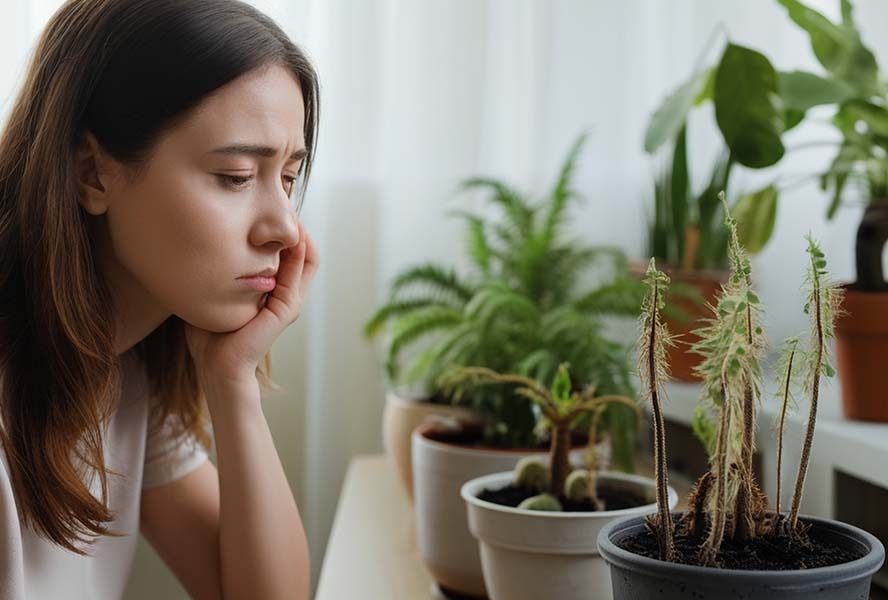
1. Choose the Right Plants for Your Space
Assessing Light Conditions
One of the most critical factors in selecting indoor plants is understanding the light conditions of your space. Different plants have varying light requirements; some thrive in bright, direct sunlight, while others can tolerate low-light a little better. To determine the light levels in your office or workspace, observe the natural light throughout the day.
EXAMPLE: Succulents and cacti generally prefer bright, direct light, making them ideal for sunny locations. Plants like snake plants and pothos can still grow in lower light level with proper care.
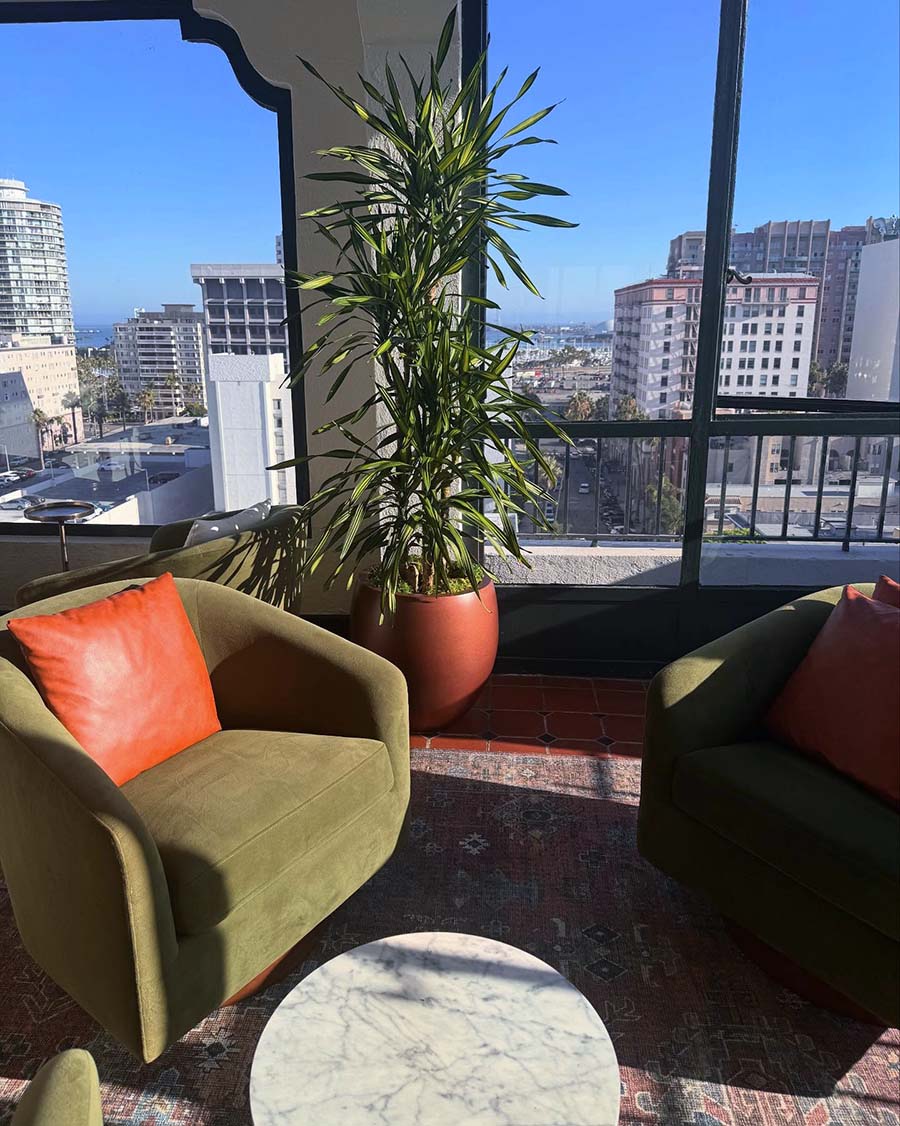
Understanding Temperature Preferences
Temperature plays a significant role in plant health. Most indoor plants prefer temperatures between 65°F and 75°F. However, some plants may have specific temperature needs that should be considered. The professionals at Growing Roots understand these preferences and will help you choose plants that will not only survive but thrive in your workspace.
EXAMPLE: Keep plants away from cold drafts and cold windows, and be mindful of hot windows or heaters and A/C vents; these can alter your plants’ needs.
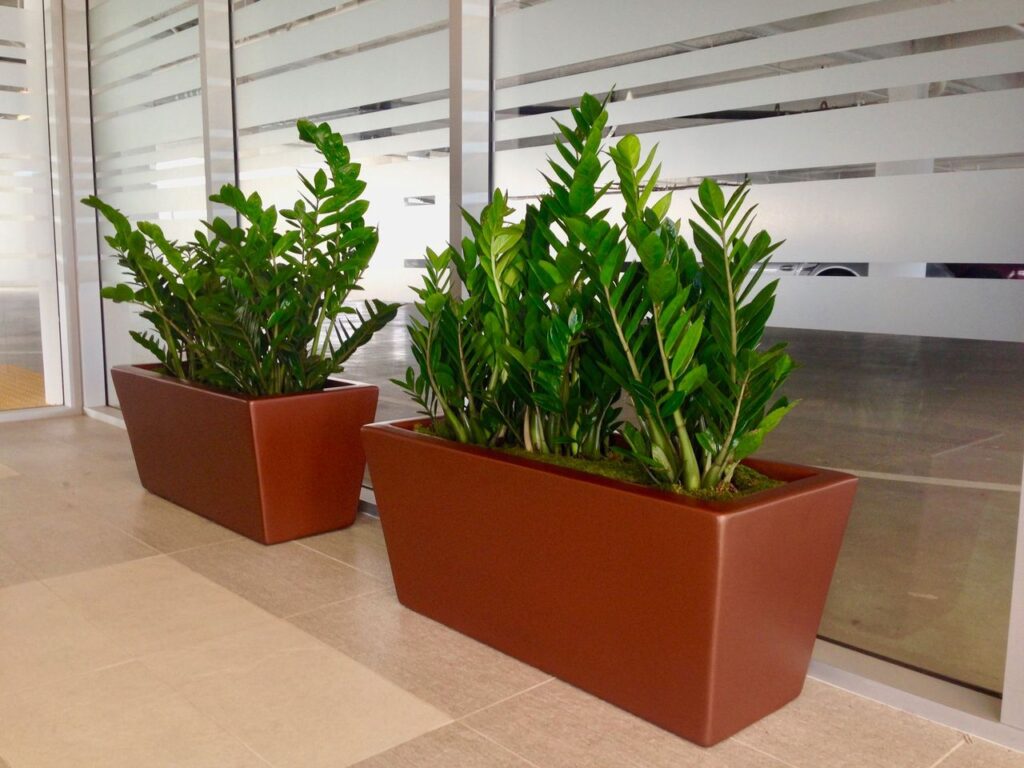
Selecting Low-Maintenance Options
Consider selecting low-maintenance plants. Some varieties, such as ZZ plants, spider plants, and pothos, are known for their resilience and ability to tolerate neglect. These plants are forgiving and can survive periods of drought or low light, making them ideal for those who might not have time for daily plant care.
EXAMPLE: By choosing low-maintenance options, you can reduce the stress associated with plant care and create a more enjoyable experience for yourself and your employees. Let the experts at Growing Roots help you select your indoor plants., They know which plants will be well-suited to your skill level and the conditions of your space.
2. Master the Art of Watering Indoor Plants
Avoid Killing Your Indoor Plants by Finding the Perfect Watering Schedule
More often than not, people either kill their plants with kindness (overwater their plants), OR ignore them until it’s too late and they wilt away. Consistency is KEY. Put your plants on a watering schedule.
TIP: A good rule of thumb is to stick your finger about an inch into the soil. If it feels dry at that depth, it’s time to water. However, if it still feels moist, hold off on watering for a few more days. This method helps you give your plants just the right amount of moisture, keeping them healthy and happy without the risk of overwatering.
How to Tell if You’re Overwatering or Underwatering
Most interior plants only require bi-weekly (every two weeks) watering, unless they’re by a very warm window with a lot of light. Overwatered plants may exhibit yellowing leaves, wilting, or even mushy stems. Conversely, underwatered plants may have dried or crispy leaves, stunted growth, and a general lack of vitality. By recognizing these signs early, you can adjust your watering practices accordingly and avoid further plant stress.
TIP: Keep a close eye on your plants, especially after making changes to their environment or care routine. Over time, you will become more attuned to their needs, making it easier to provide the right amount of water consistently.

Choosing the Right Watering Method
The way you water your plants can significantly affect their health. Basically, there are two main methods for watering indoor plants: top watering and bottom watering. For top watering, the most common method used is a watering which allows for more control over the amount of water delivered. For bottom watering (the water is placed in the saucer or bowl), the plant absorbs the water through the drainage holes. This method ensures that plants can absorb moisture through their roots at their own pace.
TIP: For top watering, be sure to dump any excess water from the saucer after a few minutes to prevent fungal issues. Whichever method you choose, ensure that it is appropriate for the type of plants you have.
3. Create a Proper Environment
Understanding Humidity Needs
Humidity is often overlooked in indoor plant care but it impacts plant health. Many indoor plants, especially tropical ones, thrive in higher humidity. In offices, humidity is often low, especially in winter when heating is used.
Ways to increase the humidity near indoor plants include:
Ensuring Proper Air Circulation
Good air circulation really helps keep your plants healthy! When the air stays still, humidity can build up, which might invite mold and pests. So, making sure there’s good airflow is a simple way to protect your plants and keep them happy. You can promote air circulation by arranging your plants with enough space between them.
EXAMPLE: By creating a well-ventilated environment, you’ll not only promote healthy growth but also reduce the risk of pest infestations and diseases.
4. Feed with Care
Choosing the Right Fertilizer
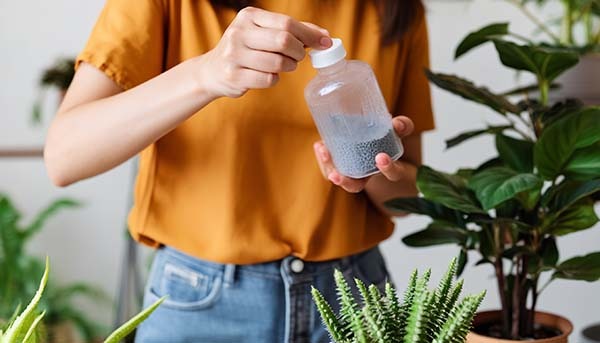
Not all fertilizers are created equal. There are various types of fertilizers available, including liquid, granular, and organic options. Make sure to use light fertilizers such as Dyna-Gro or Miracle-Gro “Houseplant” fertilizer. As long as the label reads for interior houseplants, it should be OK.
When choosing a fertilizer, look for one that provides a balanced ratio of nitrogen, phosphorus, and potassium (N-P-K), which are essential for plant growth.
Understanding Fertilizing Frequency
Always read the instructions on the fertilizer package for specific recommendations based on the product you are using. Overfertilizing can be just as harmful as not fertilizing enough, leading to fertilizer burn or nutrient imbalances.
TIP: Typically, you want to fertilize from Spring to the end of Summer every other time you water. You do not need to fertilize during the winter as the plants go dormant.
5. Regular Maintenance and Care
Cleaning Leaves for Improved Photosynthesis
Regularly cleaning your plant leaves is a simple yet effective maintenance task that can improve the odds of not killing your indoor plants. Dust and debris can accumulate on leaves over time, blocking sunlight and hindering the plant’s ability to absorb light. Gently wipe leaves with a damp cloth or sponge to remove dust and dirt.
Regular maintenance helps keep your plants looking their best and ensures they can photosynthesize efficiently.
For busy commercial spaces with indoor plants, the best way to ensure your plants are consistently well-maintained and cared for is to let the professionals at Growing Roots take care of all these details for you!
When it comes to Repotting Your Plants, Size Matters
Repotting can be a straightforward process, and doing so when necessary will lead to healthier, more vigorous plants.
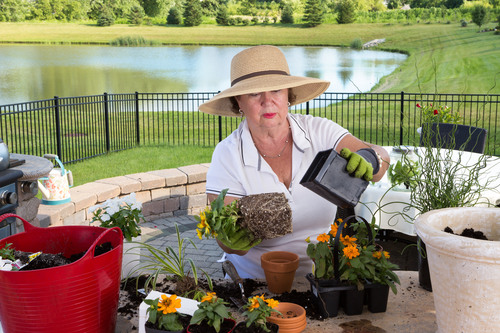
As your plants grow, they may outgrow their pots, leading to root-bound conditions that can hinder growth. Oftentimes people mistakenly kill their plants by immediately transplanting their new babies into a big pot with lots of soil. This can work in certain conditions and with aggressive roots, but more often than not its exposing the new plant to unnecessary excess soil. As a result. our beloved baby plant gets overwatered.
TIP: When repotting, choose a pot that is one size larger and ensure it has proper drainage. Too large a pot can cause the plant to be overwatered. One pot size means moving up 2” in diameter. For example, if the plant is in a 4” pot, repot it into a 6” pot. Use fresh potting soil to provide your plant with the nutrients it needs to thrive.
Monitoring for Pests and Diseases
Regularly checking your indoor plants for pests and diseases is essential. Common pests include spider mites, aphids, and mealybugs, which can quickly multiply and cause damage if left unchecked. Inspect the undersides of leaves and leaf nodes for signs of infestation, and take action promptly if you notice any issues.
In addition to pests, be vigilant for signs of disease, such as fungal growth or unusual discoloration. Addressing these issues early can prevent them from spreading and keep your plants healthy. Maintaining regular care and monitoring your plants will help you catch potential problems before they escalate.
Indoor plants can be a rewarding endeavor for business owners. By choosing the right plants, applying the correct watering techniques, creating a suitable environment, fertilizing wisely, and performing regular maintenance, you can significantly enhance the longevity and health of your indoor plants.

Regular Maintenance Programs
Our plant service offers comprehensive maintenance programs that include watering, fertilizing, pruning, and pest control. These programs are customized based on the specific needs of the plants, the environment, and the preferences of the client.
In addition to routine maintenance, we conduct periodic health assessments of the plants, allowing us to identify any potential issues before they escalate. This proactive approach to plant care not only helps maintain the aesthetic appeal of indoor spaces but also extends the lifespan of the plants, providing long-term value for business owners. Growing Roots guarantees high-quality products, services, and maintenance to all our clients. To keep plants looking their best, our guaranteed maintenance will replace plants when necessary at no extra expense to you.

Our Irvine office uses Growing Roots and we are very happy with their services. They have taken good care of our plants for many years and pricing is reasonable. I have had the pleasure of meeting a few of the technicians and can confidently say they are dedicated and experienced workers. It is always a pleasure meeting with the friendly staff.
Magaly R., Irvine, CA
FAQs About Indoor Plants
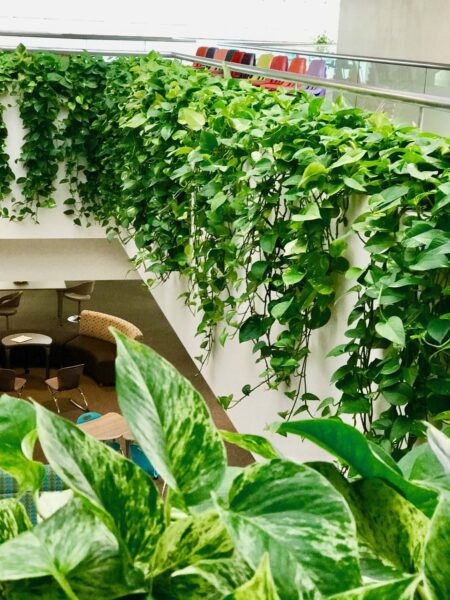
Get a FREE Consultation + Estimate
With over 23 years of experience in the industry, certified expertise, and a focus on quality assurance, Growing Roots brings specialized knowledge that enhances your workspace, government buildings, and learning environments.
Ready to explore how biophilic design transforms your office environment? Contact us today for a consultation. We’ll help you determine which option best suits your space, helping you create a workspace where both people and plants thrive together.


 Easiest Way to Reconnect with Nature (a 10-minute Challenge)
Easiest Way to Reconnect with Nature (a 10-minute Challenge)